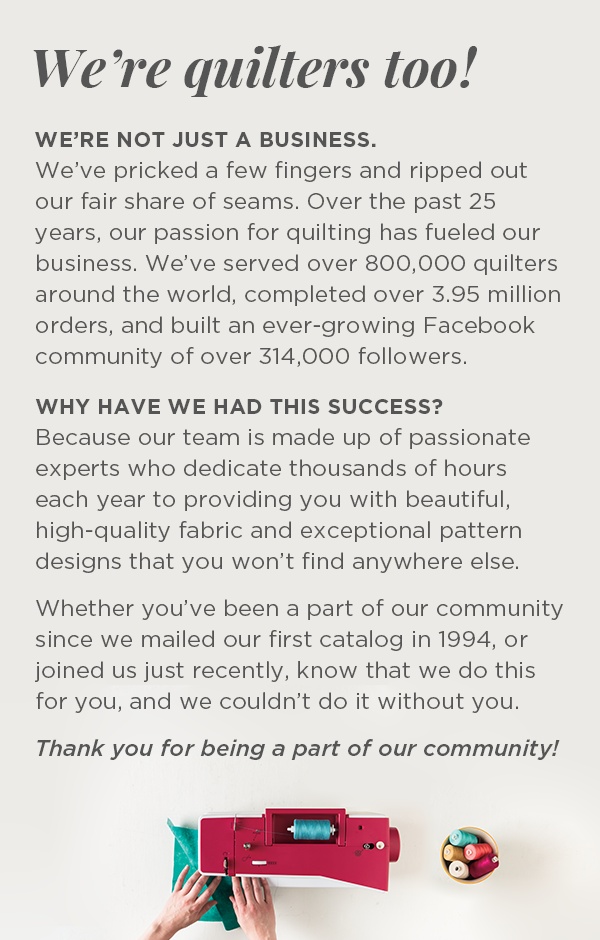Kaleidoscope - Choose and Prep Your Fabrics
by Karen Johnson
How to select a fabric for a successful Kaleidoscope block. Choosing the appropriate fabric for a Kaleidoscope block is a completely different process than when selecting for nearly any other project. As with all quilting rules, the rules are made to be broken, so please consider this a list of very loose guidelines:
- Look for medium to large prints with a design repeat between 8" - 24". The larger the repeat, the less the blocks will look like the original fabric.
- Avoid stripes or strong grids
- Look for fabrics with 20% - 30% background. Any less background and you'll lose the design within the block. Any more and the design will be difficult to create.
- Choose fabric you love because it will make the process even more fun.
- Bold designs will usually make bold Kaleidoscopes. A softer floral will usually make softer blocks. Large floral's work well, as do big or bold graphics.
- Don't rule out the "weird" or "odd" prints on the closeout table. These are fabrics that are often difficult to use in a traditional quilt (see the snakes below), but make beautiful Kaleidoscope blocks.
- Be sure to buy extra for borders or backing. There is nothing quite so fun as to show off your finished quilt, only to flip it to the backing to show your viewers the original fabric. This is especially fun when you are using the weird fabrics from the closeout table.
We've taken eleven different fabrics that we loved in traditional quilt projects, and used the design mirrors to demonstrate how the fabric will look in a block. Of course, these will vary by how many segments in your block, and how small each piece will be. A 5" finished 4-Patch like our kit will look very different than a 9" finished block from our free pattern that has 8 segments. In each of these examples, there is no wrong fabric, but it will give you an idea of what will work best for each method.
Medium floral - the design repeat in this fabric is 12", however the flowers are small. This works very well for a small 4-Patch. You can see plenty of variety in the various positions.






Large floral. This would be very soft and pretty, but because there are not enough strong lines and strong color in the print, it gives you very little variety. The final imagery is just too soft. Could work if you only need a few blocks.

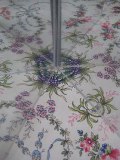

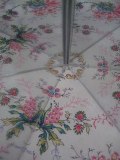



This is better as it contains stronger colors, however, lacks in variety of imagery. This will produce beautiful blocks but not give the variety of design you are looking for.



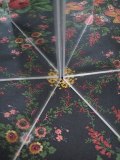

Small to medium floral. This is another example of very pretty, soft floral blocks, but only if you don't mind having just a few different looks. But again, lacks in variety of imagery and strong lines. Could work for small projects that only need 4 -5 finished blocks.






Medium novelty print. Cute and fun,but too much background and not enough variation of color.
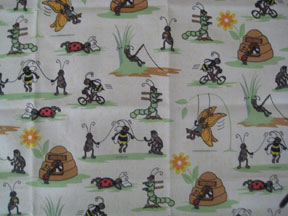

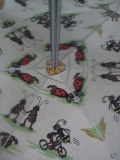


Large outlined floral. This beautiful fabric lacks both strong imagery and color. Every block would look the same.

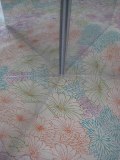

Medum floral with fewer colors. Definitely not.



Medium to large directional print. This one really depends on if you love the colors and how many different blocks you want. While the linear imagery produces some interesting possibilities, the lack of movement in the print will produce little variety in blocks.






Large grid graphic. This works if you like your blocks to also have strong lines. But if you pull way back, most of the blocks will look the same.
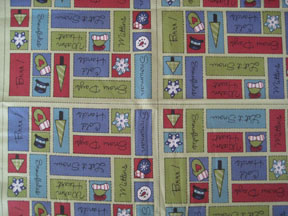



Medium novelty. The movement in this print provides very interesting shapes. The strong lines and contrasting colors combined with adequate negative space around the images produces desirable blocks. This is one that would be fun to show your quilt friends the original fabric after they've oohed and aahhed over your unique blocks!



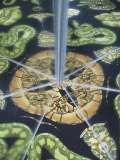

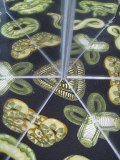
Large animal print. Perfect! Contains all the elements needed for maximum outcome! Love those novelty prints. These blocks look completely different than the original print. Makes for an unusual and fun project that keeps your friends guessing about the original. Be sure you love the dominant color in the fabric because that is what will come through in the blocks.
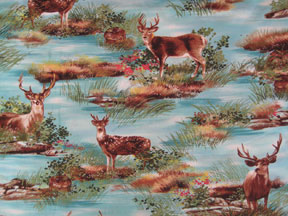

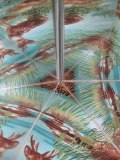





Now that you've selected a fun fabric, it's time to prepare it for cutting.
Karen has created a video that will teach you:
- How to identify a fabric design repeat.
- How to determine how many layers you'll need.
- How to pin the layers together to prepare for cutting.









